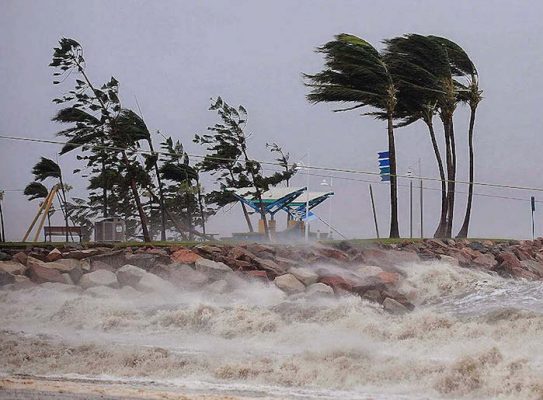CHENNAI (TIP): Predicting the weather is a tricky business; sometimes the weather man gets it right, but more often he cops the flak for getting it wrong. To reduce the window of mistakes and to improve the accuracy of forecasts, researchers at the Indian Institute of Technology-Madras are developing a technique that will depend that is fed into high quality data from satellites on supercomputers. They have been working on the `data assimilation’ method for more than a decade, where they combine numerical weather models with satellite and/or radar data to reduce errors in prediction of tropical cyclones.
Traditionally, IMD meteorologists follow the synoptic method for cyclone prediction in which weather observations taken on the ground or from ships and in the upper atmosphere with the help of sensors attached to balloons are used to make forecasts.The data from various sources are then plotted on a weather map to get a synoptic view of the world’s weather. The numerical model, which meteorologists say improves forecast accuracy , is employed for cyclone forecasts two to three days prior to their estimated landings.
When IIT-M researchers analysed the 2010 tropical cyclone Jal to evaluate the capability of their technique, they found that with the numerical model, they improve prediction by up to 35% for a 24-hour forecast and up to 12% for a 54-hour forecast. The numerical-based weather forecast system has a 60-70%prediction accuracy .
“What we are doing at IIT-M is not extensively used in operational forecasts as we need to test these for several types of situations,” said Chakravarthy Balaji, professor at department of mechanical engineering. “Many countries have adopted data assimilation technique and it’s time that India employ the model,” he added.
At IIT-M, researchers collect data from ground-based doppler weather radars and from multiple satellites like tropical rainfall-measuring mission, a Nasa satellite, Megha-tropiques, an Indian satellite and INSAT3D. These satellites have radiation detectors and scanning mechanism that identify visible, infrared or microwave radiation emanating from the land and ocean.
This ensemble of data is run in Weather Research and Forecasting model, a next generation numerical weather prediction system. They fed the data into supercomputer VIRGO, along with experts’ inputs on weather systems over the years to correct errors. The forecast can be done for 7 days, but reliability is high for up to 3 days.
The professor said the numerical model they use is time tested and the novelty in the research is the multi-pronged approach in predicting weather systems, selection of instruments on satellites to gather data, frequency selection for radiometer systems on satellites to scan the earth and measure radiation emanating from land and ocean.
He said observations made over the years through this technique will help in studying long-term patterns in the atmosphere and climate change. It can also help build a large database over the Indian Ocean, considered a `data deficient’ region Former deputy director general of regional meteorological centre, Chennai, Y E A Raj said IMD, at present, uses statistical model, which is based on past data, for long range tropical monsoon forecasting and that a research is on to use satellite and radar data in numerical models. “Numerical models will be very good for up to one week. While statistical models depend upon equations and correlations, they are useful for long-range forecasting,” he said.
IMD will be validating seasonal fore casting model developed at the Experimental Climate Prediction Centre, US, for more years before it can be used for op erational purpose.
